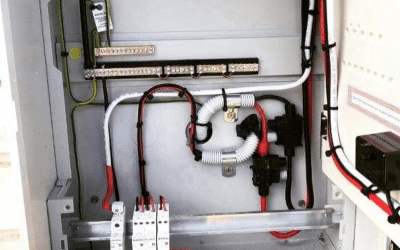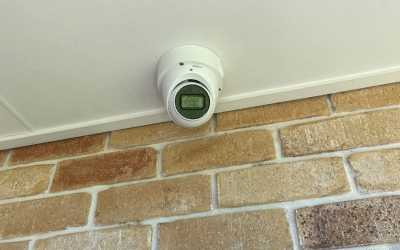As residents of Brisbane, we enjoy the comforts of modern living, a significant part of which is our reliance on electrical systems. From the humble toast at breakfast to the cooling embrace of air conditioning on a hot summer’s day, electricity plays an integral part in our daily routines. But how often do we stop to consider what lies behind the light switch or power point? This is where understanding your home’s electrical system becomes vital.
Knowledge about your home’s electrical system goes beyond mere curiosity. It’s a matter of safety and efficiency. It helps you make informed decisions about energy consumption, potentially lowering your utility bills. Furthermore, understanding the electrical aspects of your home allows you to identify potential problems before they escalate, reducing the risk of electrical fires or other dangers.
Circuit breakers are the unsung heroes of our electrical world. They work silently behind the scenes, protecting our homes and our lives. Acting as a gatekeeper, the circuit breaker regulates the flow of electricity and responds swiftly when things go wrong. From preventing electrical overloads to protecting against potential electrical fires, these devices are vital in maintaining a safe and well-functioning home. As Brisbane residents, our understanding and appreciation of these humble devices can go a long way in enhancing the safety and efficiency of our homes. Let’s delve in to explore how circuit breakers safeguard our homes’ electrical systems.
Fundamentals of Electricity
As we embark on this enlightening journey into the world of circuit breakers and home electrical systems, it’s important to establish a solid foundation in the fundamentals of electricity. Having a grasp of these principles will help us better understand how circuit breakers function and why they are so critical to our home’s safety.
Brief Overview of Electricity
Electricity, in simple terms, is the flow of electric charge. It’s a form of energy that comes into our homes in the form of electric current, powering our appliances and devices. The wonder of electricity is how it can be generated from various sources, from the traditional burning of coal to more sustainable methods like wind and solar power, each method being commonly utilised here in Brisbane.
Current, Voltage, and Resistance: Key Concepts
When we talk about electricity, three key concepts often come up: current, voltage, and resistance. Current, measured in amperes (amps), is the rate at which electric charge flows through a conductor. Voltage, on the other hand, measured in volts, is the force that pushes the current through circuits. Lastly, resistance, measured in ohms, is the opposition to the flow of current in an electrical circuit.
Imagine water flowing through a pipe. The current would be the amount of water flowing, the voltage would be the pressure pushing the water, and the resistance would be any obstacles in the pipe that slow the water down. Understanding these three concepts is crucial in appreciating how circuit breakers protect our homes.
How Electricity Works in a Home
In our homes, electricity follows a well-defined path. It enters through a main supply, which in many Brisbane residences comes from the city’s power grid, fuelled by a mix of coal and increasing amounts of renewable energy. This main supply feeds into your home’s electrical panel, often known as a breaker box.
From this panel, electricity is distributed through individual circuits—each protected by a circuit breaker—to different parts of your home, powering everything from your kitchen appliances to your bedroom lights. Once the electricity has done its job, it returns to the grid through the neutral wires, ready to be cycled through again.
This seemingly simple cycle is safeguarded at every step by the humble circuit breaker, which we’ll delve into in the next sections.
A Closer Look at Home Electrical Systems
As we further delve into the inner workings of our homes’ electrical systems, it becomes apparent how crucial a role the different components play. The wiring and electrical panels are the veins and heart of the system, respectively. Let’s take a closer look at these elements.
Understanding Electrical Wiring
The electrical wiring within our homes is like an intricate network of veins that distribute electricity to where it’s needed. Much like the circulatory system in our bodies, these wires carry the lifeblood of our homes — electricity.
Types of Wires and Their Functions
Primarily, there are three types of wires within an electrical system: hot, neutral, and ground. The hot wire, usually black or red, carries the electric current from the panel to the device. The neutral wire, typically white, carries the current back to the panel after it has passed through the device. The ground wire, usually green or bare copper, provides a safe path for electricity in case of a fault, protecting both you and your devices from electrical shocks.
Standards and Regulations in Australia
Australian standards and regulations guide the installation and maintenance of electrical wiring, ensuring optimal safety and efficiency. These include specific rules regarding wire colour coding, placement, and protection. In Queensland, all electrical work must comply with the Wiring Rules (Australian Standard AS/NZS 3000:2018), which serve as the technical standard for electrical installations.
Electrical Panels: The Heart of Your Home
The electrical panel, often called a breaker box, is essentially the heart of your home’s electrical system. It’s a crucial junction point where the incoming electricity is divided into individual circuits that run throughout your home.
How Electrical Panels Function
The panel’s main function is to distribute power while providing a safety mechanism for each circuit. Each circuit within the panel is guarded by a circuit breaker. When everything is functioning normally, the circuit breaker allows electrical current to flow from the panel along the circuit. However, in the event of an overload or short circuit, the breaker will “trip”, interrupting the flow of electricity and protecting the wiring and devices on that circuit from damage.
Understanding the integral role that electrical wiring and panels play in our homes underscores the importance of keeping them in good working order. Circuit breakers play a pivotal role in this task, safeguarding our homes and making modern, electrified life possible.
Introduction to Circuit Breakers
Stepping deeper into the world of home electrical systems, we now encounter one of the most critical components in our homes — the circuit breaker. Much like a vigilant watchman, it stands guard over our electrical systems, ensuring the safe flow of electricity.
What is a Circuit Breaker?
A circuit breaker is a protective device that regulates the flow of electricity within a circuit. It is designed to prevent damage caused by excess current from an overload or short circuit. By automatically interrupting electrical flow when a fault is detected, the circuit breaker plays a crucial role in protecting our homes and our appliances.
History and Evolution of Circuit Breakers
The need for a device like the circuit breaker became evident as early as the 19th century, with the proliferation of electricity in homes. The earliest form was the fuse, a simple device that would melt under excess current, interrupting the circuit. However, once a fuse blew, it had to be replaced, making it less than ideal for long-term use.
The modern circuit breaker, as we know it, was first introduced in the early 20th century. Since then, it has evolved in design and functionality, with modern circuit breakers being safer, more efficient, and easier to use. They are designed to be reset rather than replaced, making them more practical for residential use.
How Circuit Breakers Work
A circuit breaker works by constantly monitoring the flow of electricity through the circuit it protects. When the current flow is normal, the circuit breaker remains in the ‘on’ position, allowing electricity to flow. However, when it detects an abnormal increase in current flow — such as during an overload or short circuit — it automatically switches to the ‘off’ position, stopping the flow of electricity and preventing potential harm to the circuit’s wiring and devices.
The Trip Mechanism: Overload and Short Circuits
The trip mechanism is at the heart of a circuit breaker’s operation. It is designed to detect and respond to overloads and short circuits. An overload occurs when too many appliances or devices draw power from the same circuit, exceeding the circuit’s capacity. A short circuit, on the other hand, occurs when electricity takes a ‘shortcut’ and bypasses the normal path due to a wiring fault. In either case, the circuit breaker responds by ‘tripping’ and interrupting the electrical flow, thereby preventing potential damage or fire.
Understanding the function and importance of circuit breakers is the first step towards safeguarding your home. As we continue to explore this topic, we will delve into the different types of circuit breakers and their specific roles within our homes’ electrical systems.
Types of Circuit Breakers
While all circuit breakers serve the same fundamental purpose — to protect electrical circuits from damage due to an overload or short circuit — there are several different types. Each is designed to address specific needs or safety concerns. Here, we will explore the most commonly used types: standard circuit breakers, Ground Fault Circuit Interrupters (GFCIs), Arc Fault Circuit Interrupters (AFCIs), and Combination Arc Fault Circuit Interrupters (CAFCIs).
Standard Circuit Breakers
Standard circuit breakers are the most basic type and the ones most often found in homes around Brisbane. These breakers monitor the flow of electricity along a circuit, and when the current exceeds a specified limit, the breaker trips, cutting off the power. Standard circuit breakers come in two types: single-pole breakers that protect one circuit and double-pole breakers that protect two.
Ground Fault Circuit Interrupters (GFCIs)
GFCI breakers are designed to protect against ground faults, which occur when electricity escapes the confines of the wiring and takes a path to the ground, a situation that could lead to a serious electric shock. GFCIs monitor the balance of current between the hot and neutral wires. If there is an imbalance, suggesting a ground fault, the breaker trips, and power is cut off. GFCIs are typically used in areas where electricity and water may come into contact, such as kitchens, bathrooms, and outdoors.
Arc Fault Circuit Interrupters (AFCIs)
AFCIs are designed to prevent fires by detecting potentially dangerous electrical arcs — sudden discharges of electricity that can jump gaps between wires. These arcs can generate intense heat, potentially igniting surrounding materials. AFCIs differentiate between harmless arcs (such as when a light switch is flipped) and potentially dangerous ones (such as those caused by worn or damaged wires), tripping the circuit in the latter case.
Combination Arc Fault Circuit Interrupters (CAFCIs)
The CAFCI is a more advanced version of the AFCI. In addition to detecting potential arc faults within a circuit, CAFCIs also detect ground faults, providing a higher level of protection against both electrical fires and shocks. They are becoming increasingly popular in new home constructions and renovations.
By understanding the differences between these types of circuit breakers, you can ensure that your home’s electrical system is equipped with the appropriate protection. In the following sections, we’ll delve into how to maintain and troubleshoot these vital devices.
Choosing the Right Circuit Breaker for Your Home
While it’s clear that circuit breakers play an essential role in maintaining the safety of your home’s electrical system, choosing the right circuit breaker can often seem like a daunting task. However, with a bit of understanding about the specifications and how to match these to your electrical system, you can navigate this decision with confidence.
Decoding the Specifications
Each circuit breaker comes with a set of specifications that define its capabilities and limitations. These are typically inscribed on the breaker itself and can help you determine if it’s the right fit for your home.
Ampere Rating, Voltage Rating, and Interruption Rating
The Ampere Rating indicates the maximum amount of current the breaker can handle before it trips. Common ratings for residential breakers are 15, 20, and 30 amperes. Your choice should match the load capacity of the circuit it will protect.
The Voltage Rating signifies the highest voltage the breaker can safely interrupt. In Australia, this would typically be 240 volts for a single-phase home power supply.
The Interruption Rating is the maximum short-circuit current the breaker can interrupt without failure. This figure is less critical for most residential applications, as it refers to extreme conditions that are unlikely to occur in a typical home setting.
Matching Circuit Breakers to Your Electrical System
The process of choosing a circuit breaker involves matching its specifications to the demands and capacity of your electrical system. This starts with an understanding of your home’s wiring and the devices on each circuit.
For example, for a circuit primarily powering lighting and small appliances, a standard 15-ampere breaker would likely suffice. In contrast, a kitchen circuit powering high-demand appliances like a refrigerator or dishwasher might require a 20 or 30-ampere breaker.
It’s also critical to ensure your breaker is compatible with your electrical panel. Not all breakers fit all panels, and forcing an incompatible breaker into your panel can result in a poor connection, overheating, or even fire.
Finally, certain areas of the home require specific types of circuit breakers. For example, GFCIs are required in wet or damp areas, while AFCIs are increasingly required in living areas to protect against electrical fires.
When in doubt, it’s always best to consult with a licensed electrician. They can provide expert guidance to ensure the circuit breakers in your home are the right fit for your electrical system, providing the best protection possible for your home and family.
Circuit Breaker Installation and Replacement
The process of installing or replacing a circuit breaker is a crucial task in the maintenance of your home’s electrical system. While it may seem straightforward, it requires careful attention to ensure safety and proper functioning. Let’s look at the pros and cons of a DIY approach and then walk through the basic steps of circuit breaker replacement.
Professional vs. DIY Approach: What You Should Know
It’s natural to wonder whether you should hire a professional electrician or tackle the task of installing or replacing a circuit breaker yourself. A DIY approach might seem appealing due to potential cost savings, but it’s essential to consider the risks.
Working with electricity, especially in something as central as your electrical panel, is inherently dangerous. Improper installation can result in electrical shock, damage to your electrical system, or even fire. For these reasons, even if you feel comfortable with smaller electrical tasks, it’s generally recommended to leave circuit breaker installation or replacement to a professional.
However, if you do decide to undertake this task yourself, be sure to educate yourself thoroughly about the process, use the right tools, and always prioritize safety.
Step-by-step Guide to Circuit Breaker Replacement
If you have a faulty circuit breaker that needs replacing and you’re confident in your abilities, here’s a general guide on how to proceed. However, this is a broad overview and shouldn’t replace thorough research or professional guidance.
Shut Off the Main Power: Before touching your electrical panel, ensure you turn off the main power supply to your house. This will cut electricity to all circuits and make it safer to work on your panel.
Remove the Panel Cover: Using a screwdriver, remove the screws holding the panel cover in place and carefully take it off.
Identify and Remove the Faulty Breaker: The faulty breaker is typically in the ‘off’ position or halfway between ‘on’ and ‘off’. Confirm it’s the right one, then carefully snap or unscrew it from the panel.
Disconnect the Wire: After the breaker is free from the panel, disconnect the wire connected to it.
Install the New Breaker: Connect the wire to the new breaker and ensure it’s secure. Then, carefully snap or screw the new breaker into the same slot in the panel.
Replace the Panel Cover: Put the panel cover back on, ensuring it fits correctly and securely.
Turn On the Main Power: Now you can switch the main power back on. Then, switch on the new breaker.
Test the New Breaker: Finally, test the new breaker to make sure it’s functioning correctly.
Always remember, when it comes to electricity, safety should always be your top priority. If you’re ever in doubt or uncomfortable with the process, don’t hesitate to call a professional.
Essential Circuit Breaker Maintenance
Just like any other component of your home’s infrastructure, circuit breakers need regular maintenance to continue operating effectively and safely. This doesn’t mean you’ll be taking apart your electrical panel – but there are simple, routine checks you can perform, and certain signs that indicate it’s time to call in a professional.
Routine Checks and Potential Issues
Conducting routine checks on your circuit breakers can help identify potential issues before they escalate into more significant problems. A monthly check is a good habit to cultivate.
During each check, verify that all the breakers are functioning properly. Each breaker should be firmly in the ‘on’ or ‘off’ position, not stuck in between. A breaker that keeps tripping or won’t stay in the ‘on’ position might be faulty.
You can also test each breaker by flipping it to the ‘off’ position, then back ‘on’. Everything should operate smoothly. Any grinding or resistance could indicate a problem.
Visually inspect your electrical panel for signs of damage, including burns, corrosion, or pest activity. If you notice a strange smell, such as burning plastic, it could indicate a serious issue and you should immediately contact a professional.
When to Call a Professional: Warning Signs
While regular checks can catch many issues, there are certain signs that should prompt you to immediately call a licensed electrician. These include:
Persistent Circuit Tripping: If a breaker trips frequently, it’s a clear sign something is wrong. It could be an overload, a short circuit, or a ground fault.
Physical Damage: If you see burns or corrosion on the breaker or electrical panel, it’s essential to call a professional to assess the situation.
Weird Noises: If your panel starts buzzing, hissing, or making other unusual noises, it could indicate a serious problem.
Heat and Smells: A circuit breaker that’s too hot to touch or that causes a burning smell can signal an issue like an overload or a loose connection.
If you encounter any of these warning signs, it’s best not to risk it. A professional electrician will be able to diagnose and resolve the issue safely and effectively, ensuring the continued safe operation of your home’s electrical system.
Protecting Your Home: Beyond Circuit Breakers
While circuit breakers are a critical component of a home’s electrical system, they are just one part of a broader safety ecosystem. Other devices, like safety switches and surge protectors, play crucial roles in keeping your home and devices safe from electrical faults and surges. Understanding these devices can help you ensure that your Brisbane home is as safe as it can be from electrical dangers.
Safety Switches in Australia
In Australia, safety switches, also known as Residual Current Devices (RCDs), are a legal requirement in homes. These devices add an extra layer of protection against electric shock, a potentially lethal threat.
Role and Importance of Safety Switches
Safety switches monitor the flow of electricity through a circuit and rapidly shut off the electrical supply within milliseconds when currents leak from faulty switches, wiring, or appliances. This swift action significantly reduces the risk of electricity-related injuries and deaths.
In Australia, the law requires that safety switches be installed in all new homes. Existing homes are also mandated to have safety switches installed whenever significant electrical work is undertaken. In Queensland, specifically, it’s a requirement for all homes being sold or rented to have safety switches installed in their power circuits.
Surge Protectors: Safeguarding Your Devices
While circuit breakers and safety switches are designed to protect people from electrical hazards, surge protectors are there to protect your electrical devices. A surge protector shields your appliances and electronics from power spikes, which can cause significant damage.
Power surges can originate from many sources, including lightning strikes, power outages, and even large appliances switching on and off. By redirecting the excess voltage to the ground, surge protectors prevent this high voltage from flowing into your devices.
Investing in high-quality surge protectors can help extend the lifespan of your appliances and electronics. Keep in mind that not all power boards offer surge protection, so it’s important to check the product description when purchasing.
Circuit breakers, safety switches, and surge protectors all contribute to making your home’s electrical system safer. A deep understanding of these components will ensure you’re well-equipped to maintain the safety of your home and your loved ones.
Summary
As we wrap up our comprehensive exploration of what is a circuit breaker and its pivotal role in home safety, it’s clear that understanding these devices goes a long way towards maintaining a safe and functioning home environment.
Circuit breakers are more than just another component of your home’s electrical system; they are critical safeguards designed to prevent electrical overloads and short circuits, protecting your home from potential fires. We’ve unpacked how they function, the different types available, and what to consider when selecting one for your home.
Beyond that, we have emphasized the importance of regular maintenance checks, how to spot potential issues, and when to call in a professional electrician. We’ve also broadened our view beyond circuit breakers to include other critical safety components, such as safety switches and surge protectors.
Understanding your home’s electrical system is a continuous journey. As technology advances, so too do the systems and safeguards that protect our homes. By staying informed and up-to-date, you can continue to enhance the safety and efficiency of your home’s electrical system.
As residents of Brisbane and beyond, your awareness and action towards electrical safety are critical. In our interconnected world, knowledge about your home’s electrical system is more than just useful – it’s an essential part of responsible home ownership.
With this foundation of knowledge in place, you are now better equipped to safeguard your home’s electrical system, ensuring the safety of your loved ones, and giving you peace of mind.







